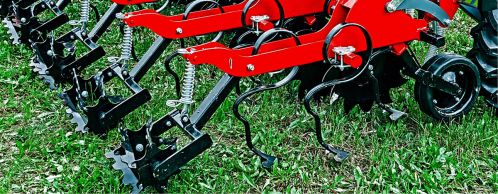
Is Now the Right Time to Prepay Crop Inputs?
Article By: Cathy Asher, Relationship Manager for SFB
Harvest season is when we typically begin thinking about cropping operations for the coming year and deciding when the time will be to start locking prices of those inputs with our suppliers. While there is no crystal ball to indicate when the optimal time is to lock inputs costs, we should be proactive and consider several factors when executing a decision to prepay. Some factors to consider include trends in pricing, supply concerns, prepay discounts, source of prepay funds, and future pricing predictions.
If you've been following the markets lately related to crop inputs, you've undoubtedly seen the volatility in the fertilizer market, with the most notable fluctuations related to the cost of potash. In the last year, potash has roughly doubled in priced with the largest price increase occurring in the last six weeks. According to one local supplier, potash has increased more than $200 per ton in that period. Similar price increases have also occurred with urea, 28% and phosphate. With the current logistical and labor challenges due to COVID-19, there does not appear to be any significant reductions in fertilizer pricing on the horizon. As a result of this price volatility, some suppliers are hesitant to set pricing for Spring 2022 and are likely not offering discounts. At this point, it appears that the only way to guarantee price and supply is to prepay your fertilizer in its entirety.
As noted earlier, the main driver behind price volatility appears to be labor shortages and logistical concerns. It may not be a matter of supply so much as it is the challenge of getting product through port. These supply chain disruptions are not unique to fertilizer or agriculture, but fertilizer seems to be the farm expense category hardest hit right now. Chemical pricing hasn't been impacted to the same degree as fertilizer although Roundup and Liberty prices are roughly triple the cost of last year. Seed prices, however, are remaining steady with no increases on the horizon at this point.
Whatever your approach to contracting your input costs, you need to be comfortable with the level of risk you are taking. You may want to consider contracting a portion of your inputs prior to Spring just as you would contract a portion of your production prior to harvest. Your best option for determining input costs will be to work with your agronomist to write your plans early. Understanding your input requirements and tweaking your plans to get the best return on your investment is critical in predicting the profitability of your operation. Your lender would also welcome the opportunity to discuss options for locking input costs and whether to finance that expense or utilize current year profits to cover those costs. Planning and clear communication with your financial institution are critical first steps in positioning your operation for success in the coming year.
We wish you a safe and productive harvest season!
Cathy Asher is a relationship manager and serves on the Agriculture Banking Team for Security Financial Bank. She can be reached at casher@sfbank.com or at 715.672.2410 .



